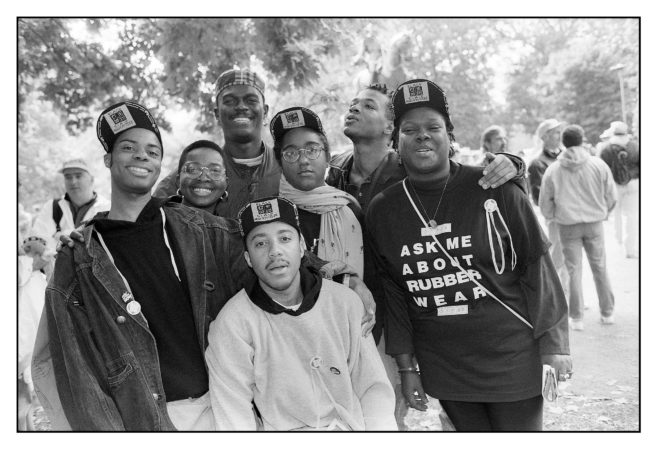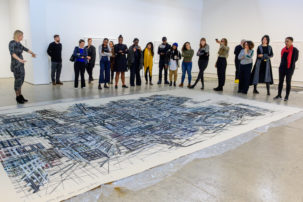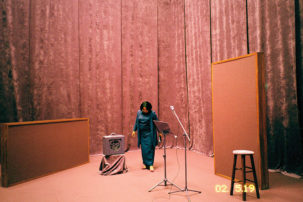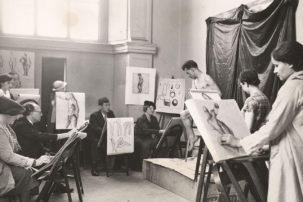Last summer, Canadian artist Kara Springer, along with other members of Black Women Artists for Black Lives Matter, was participating in a performance at New York’s New Museum. The performance was part of Simone Leigh’s residency and exhibition at the museum, “The Waiting Room,” with works on view that referenced and provided various healing and care environments in the face of collective black pain.
Springer had already been exploring the use of text in her work, and she had been collecting and making note of different phrases she heard in public spaces—specifically, at community gatherings aimed to reckon with, and have dialogue about the continued violence against black bodies. The words “white people. do something” came up that night at the New Museum in what Springer described as a “beautiful moment” that resonated with her.
A few weeks later, on September 22, 2016, Springer erected an eight-foot-by-thirty-foot black sign with the words “white people. do something” painted in large, bold, uncapitalized white letters in the courtyard of Philadelphia’s Tyler School of Art. Entitled A Small Matter of Engineering, Part II, it faced the educational institution, where she was in the process of completing her MFA. The large sign was accompanied, indoors, by A Small Matter of Engineering, Part I: a magnified photograph of broken plaster. Both works could be viewed together when walking down one of the school’s windowed hallways.
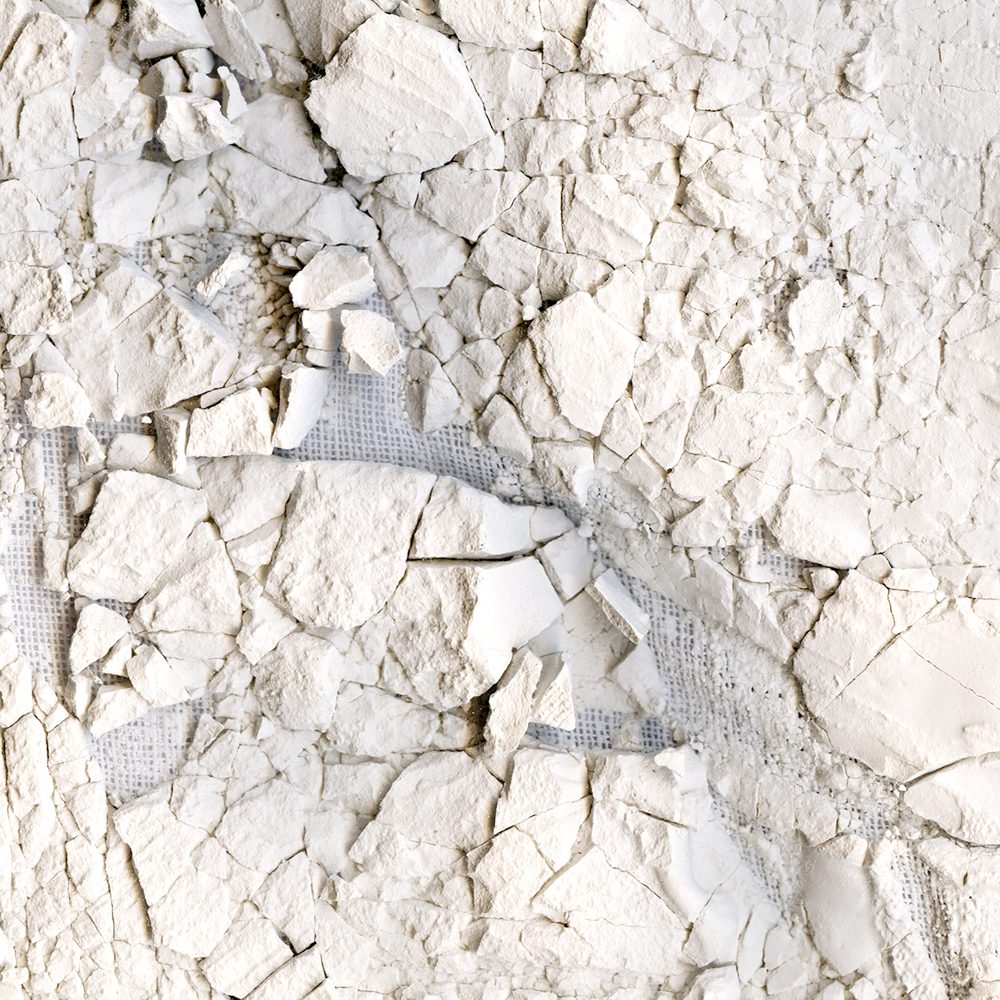 Kara Springer, A Small Matter of Engineering, Part I, 2016. Courtesy the artist.
Kara Springer, A Small Matter of Engineering, Part I, 2016. Courtesy the artist.
Within days of the work going up, it became a digital spectacle and received an outpouring of both love and immense hostility. Images and opinions of the sign ricocheted throughout Twitter and Instagram. Although many on social media and beyond lauded the work, intense and angry reactions dominated, as various media sources—including the far-right conservative website Breitbart—posted articles about the work. The commenting was incredibly hostile, not only towards the artwork, but towards the artist herself. Notably, some viewers and commenters found the work “racist,” “lazy,” “anti-white,” “not art.” For others, it was an opportunity to discuss what “white people” were going “to do” (such as “vote for Trump”), or to discuss what “white people” have “already done” (e.g. “You mean like create, build & maintain Western Civilization? Already done it” or “But White People already do everything”).
The school, which supported Springer’s work, received numerous irate phone calls and a very hostile voicemail deploring the work and demanding its removal; this prompted the school to have round-the-clock security at the sculpture for a week. As the threats and heated responses to the work began to wane, the sign remained in the school’s courtyard throughout the fall. The weather changed, and the sculpture would sometimes tip over. In the first few weeks, Springer, with the help of fellow students, would go outside and lift it back upright. Eventually, though, others started maintaining it themselves, putting it back in its place and eventually bringing tools to fix it as it began to wear—marking a warm and magical turn in the work’s trajectory as a public artwork. By December, it was noted as one of “Philadelphia’s Top 10 Public Art Moments of 2016.”
 Kara Springer installing A Small Matter of Engineering, Part II in early 2017 at the Institute of Contemporary Art at the University of Pennsylvania. Photo: David McDowell.
Kara Springer installing A Small Matter of Engineering, Part II in early 2017 at the Institute of Contemporary Art at the University of Pennsylvania. Photo: David McDowell.
Springer, who did not expect the intensity A Small Matter of Engineering, Part II garnered, was then invited to install the work at the Institute of Contemporary Art at the University of Pennsylvania. Springer’s piece was exhibited there alongside “The Freedom Principle: Experiments in Art and Music, 1965 to Now,” an exhibition highlighting the legacy of avant-garde jazz and the experimental music of the late 1960s—particularly within the African American arts scene on the South Side of Chicago.
For this second installation, the artist delineated the same direct and ambiguous statement—“white people. do something.”—but with very different materials, and a very different effect. This time, at the ICA, she used white marble dust on a black wall, which faced the street from inside the art institution. That installation debuted in early February 2017, and was left in place until March 2017.
A Small Matter of Engineering holds strong connections to Springer’s past work, which is also rooted in site-specificity and social consciousness. Before transitioning to visual art and entering her MFA at Tyler, Springer was a successful industrial designer, having studied at OCAD University in Toronto.
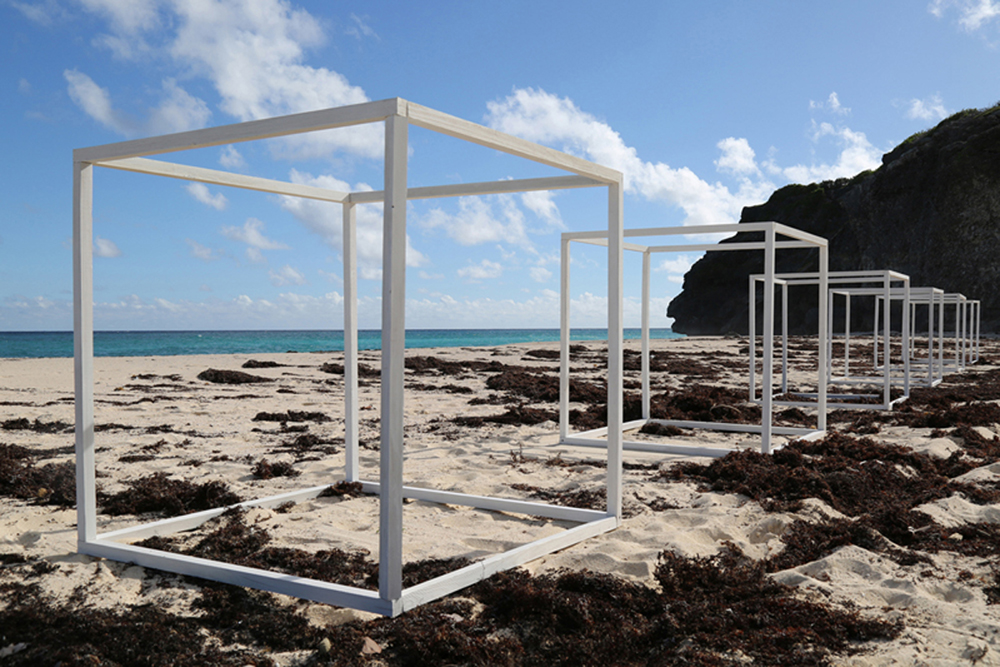 Kara Springer, Repositioned Objects, Untitled, St. Philip, Barbados, 2014. Courtesy the artist.
Kara Springer, Repositioned Objects, Untitled, St. Philip, Barbados, 2014. Courtesy the artist.
Springer’s past series Repositioned Objects foregrounded her interest in Minimalism, both formally and socio-politically, as she re-created and re-contextualized the forms of this white-male-dominated art movement. For one Repositioned Objects work, for example, the artist built large-scale, white wooden cubes that she placed on the shores of Barbados, where she was born. Although the structures were well-built, they were no match for the sea which destroyed them. Thus denied a safe place to rest, let alone a gallery context, these cubes—and Minimalism itself—were forced to have a dialogue with the world around them in a very literal way. Their diminished value on the Bajan coast points to the lacuna of black, and female, voices in the Minimalist canon.
In another past work, Springer created a large-scale photographic diptych of fallen strands of her black hair against a stark white background. Partially titling the diptych Ana & Andre, Springer directly referenced feminist body artist Ana Mendieta and famed Minimalist sculptor Carl Andre. The two were married briefly in 1985 until Mendieta’s death later that year, often thought to be at the hands of her husband. As with Repositioned Objects, the diptych’s aesthetic and the inclusion of her own body pointed to Minimalism’s legacy of sexism, racism and violence.
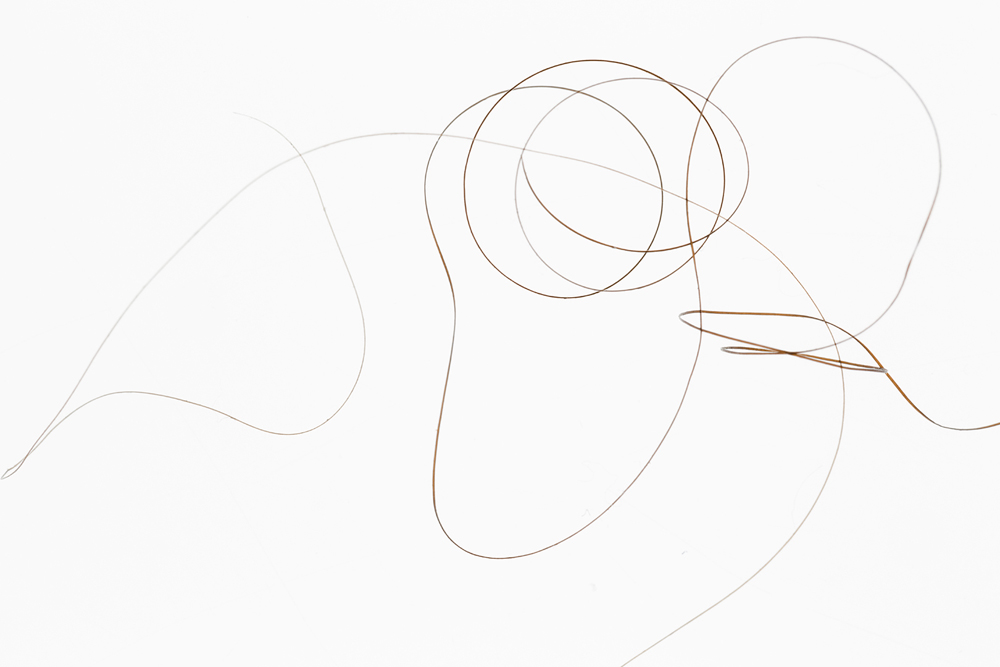 Kara Springer, Ana & Andre Series, Untitled, 2014. Courtesy the artist.
Kara Springer, Ana & Andre Series, Untitled, 2014. Courtesy the artist.
As for A Small Matter of Engineering, Part II, the materiality of Springer’s two iterations are starkly different. How does this, and the site and time-specificity of the two installations, alter their reading? And what of the statement itself—what is it actually asking and saying?
The large, vibrant text in the Tyler courtyard, and its placement on a frame reminiscent of modern commercial signage, posits an authoritative mood to the work, making it akin to a yell. Rewinding to the climate of September 2016, when it was first installed, we remember that America was almost at full term with the gestating presidential election, and overflowing with the affects and effects of harrowing brutality towards black people and its visual dissemination online.
In this first context, the phrase “white people. do something.” reads as a much needed, loud and urgent demand to resist systemic racial oppression. The complex and, perhaps, provocative call to “white people” specifically asks that the undeniable power imbalance be shifted in order to transgress the dominating normalization of hatred, severe violence and erasure. Its site—placed outside of a school building, looking in—raises questions regarding the role educational institutions too often play in fostering the marginalization (but more often absence) of non-white, Indigenous, queer and feminist histories and perspectives.
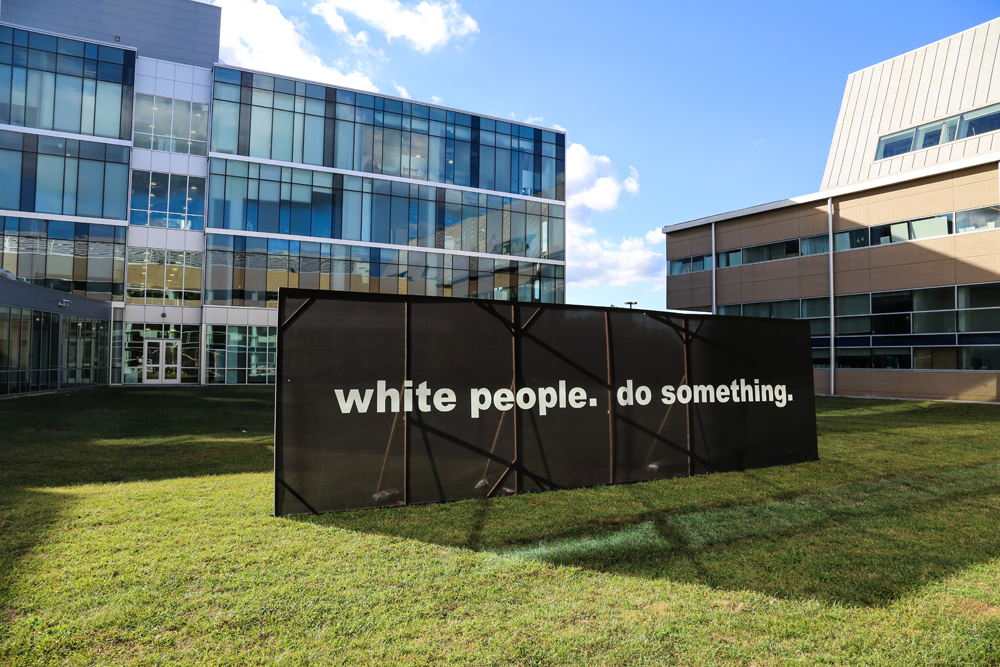 Kara Springer, A Small Matter of Engineering, Part II, 2016. Photo: Conrad Benner.
Kara Springer, A Small Matter of Engineering, Part II, 2016. Photo: Conrad Benner.
In contrast to the outdoor sign, the statement’s tenuous marble dust outline within the ICA in early 2017 appeared more analogous to a whisper. When Springer installed that work in the gallery, the dark cloud of Trump’s presidency had settled over America and the world, further emphasizing an already treacherous climate of hate and division. The artwork’s fragile rendering, where, in Springer’s words “it became a marking of its former self—a relic of what it had been,” harrowingly articulated the prevailing trauma and loss felt at that moment. Its materiality insisted on intimacy and impermanence, legible at close range in a passageway of the museum where anyone could brush off or disturb the delicately placed dust.
Facing in towards an institutional building at Tyler, the piece seemed to need to yell to be heard, to insist a demand to be met. But facing out from within it, at the ICA, it was a whispered request, perhaps even a sorrowful refrain. The nuances of these acts of physical positioning in relation to their architectural frameworks articulate the frustrations of being disregarded very differently. By the time the second work was installed, Springer’s piece, and indeed much of the country, seemed to have passed from anger to something much more tenuous.
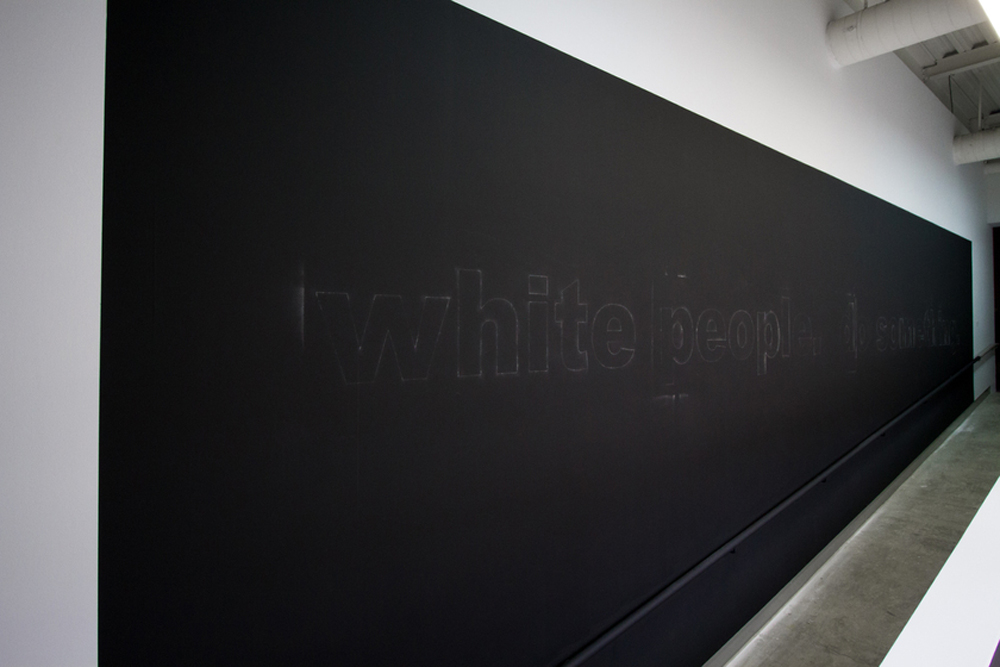 Kara Springer, A Small Matter of Engineering, Part II, 2017. Installation view, Institute of Contemporary Art, University of Pennsylvania. Photo: David McDowell.
Kara Springer, A Small Matter of Engineering, Part II, 2017. Installation view, Institute of Contemporary Art, University of Pennsylvania. Photo: David McDowell.
The ambiguous, open-ended nature of the “white people. do something.” statement evokes the complex ways language is deployed in public discourse during a moment of political urgency. One thing that came to mind when I came across Springer’s piece online was Trump’s now infamous slogan “Make America Great Again,” a phrase that seems to simultaneously say everything and nothing.
And the strategies in this work also call to mind another, related phenomenon: In the fall of 2016, the artist-run Super PAC For Freedoms, headed by Hank Willis Thomas and Eric Gottesman, erected a series of politically charged billboards throughout the US. On one billboard in Pearl, Mississippi, the statement “Make America Great Again” was placed over a famous 1965 Civil Rights photograph of Bloody Sunday. The image depicts protesters marching from Selma to Montgomery, Alabama, to exercise their right to vote at the moment they encountered a wall of state troopers. The photograph, taken by Spider Martin, depicts the “two-minute warning” the troopers gave the unarmed protesters.
Moments after Spider Martin’s photograph was taken, the protesters refused to turn back and were brutally attacked with tear gas and beaten with billy clubs. Traumatic images of the event were broadcast throughout the country. Although violent, the Selma march story is one of heroism and optimism, of Americans working hard and courageously to have their needs met and voices heard. Framed by this image, the ambiguity of Trump’s slogan becomes clear: When was America great exactly? And what about that should be repeated?
Unfortunately, many people, including the Mayor of Pearl Brad Rogers and Mississippi Governor Phil Bryant, condemned the billboard. The city eventually censored the work by covering the billboard in black—a bleak gesture silencing both art and the right to ask even the most obvious of political questions.
‘Make America Great Again’ billboard in Pearl covered up https://t.co/SgjEooDjdE
— WJTV 12 News (@WJTV) November 21, 2016
A Small Matter of Engineering, Part II, like the billboard in Pearl, reveals the challenges in exhibiting certain statements in public spaces. Plucked from the safe, supportive and harmonious space of a Black Women Artists for Black Lives Matter performance in summer of 2016 and decontextualized for the public, the power and content of the phrase “white people. do something.” lies in its ability to act as a litmus test for people’s responses and reactions, revealing the United States’s continually frightening divide over issues of race. The recent acquittal of Philando Castile’s killer provides yet another example of a system deeply and ferociously entrenched in racial bias.
And what of the photograph of broken plaster—an image that was largely overshadowed by the controversy over its more easily apprehended textual accompaniment? For me, this Part I image, at once material and abstract, provided a much more intimate and physical complement to Part II, bringing to mind the use of plaster for casts to heal broken bones, and therefore, perhaps, looping back to the work of Simone Leigh—the artist who initiated Black Women Artists for Black Lives Matter, and hence, Springer’s most prominent project to date.
When speaking with Springer about the title of A Small Matter of Engineering, Parts I and II, she revealed that it came from an ironic, comical statement used by engineers to describe seemingly impossible and extraordinary tasks. Equality, moral responsibility and healing—just small matters of engineering, indeed.
Heather Rigg is a writer and curator based in Toronto. She runs the Instagram feed @mondayartdigest.

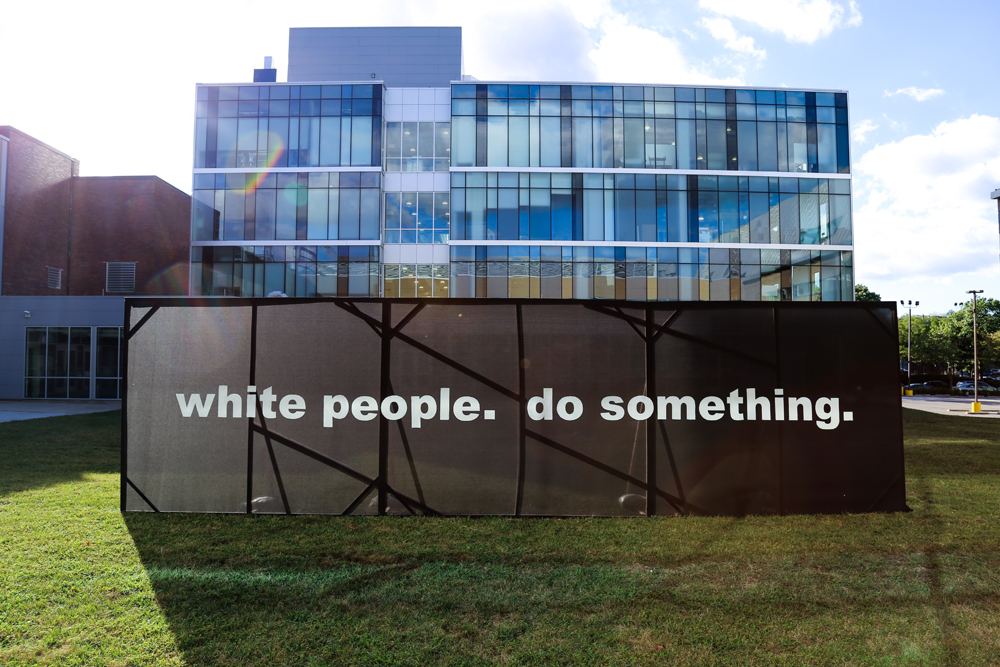 Kara Springer, A Small Matter of Engineering, Part II, 2016. Photo: Conrad Benner.
Kara Springer, A Small Matter of Engineering, Part II, 2016. Photo: Conrad Benner.
